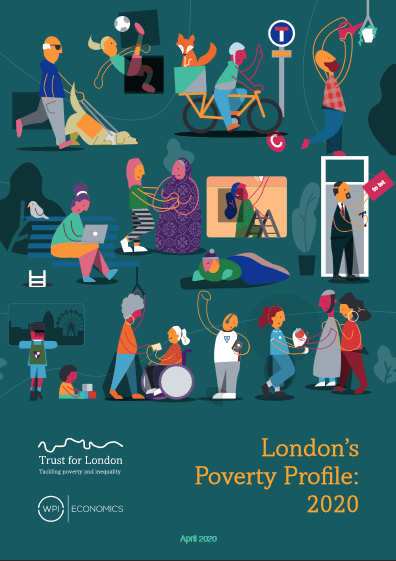 Even before Covid-19, London had the highest poverty rates in the UK according to figures released today in London’s Poverty Profile (LPP).
Even before Covid-19, London had the highest poverty rates in the UK according to figures released today in London’s Poverty Profile (LPP).
The report shows how the increase of poverty in the private rented sector, the higher costs of living in the capital, and the rise of in-work poverty had left many Londoners struggling before the Covid-19 crisis.
It is known that pandemics disproportionally affect those most disadvantaged and the economic consequences of Covid-19 will hit the poorest hardest. The data in today’s report, compiled before the pandemic, is an important baseline against which the impacts of Covid-19 on poverty in the capital can be measured. So that as we emerge from the crisis, we can all work together to ensure that no one has to live a life of poverty, and that social and economic prosperity is shared more equitably.
LPP was commissioned by Trust for London and produced by WPI Economics.
Key findings
Poverty continues to be higher in London than in any other region in the UK
- 28% of people live in poverty in London (2.5 million) compared to 22% in UK.
- The costs of living in London are 15-58% higher than the rest of the UK.
- However the picture is mixed across London - six in ten (57%) of children in Tower Hamlets are in poverty, compared to two in ten (21%) in Sutton.
Housing is a major driver of poverty and the housing crisis is getting worse
- Households in poverty in London face housing costs that, on average, amount to 56% of their net income compared to 37% in the rest of England.
- 56,000 of London’s households are in temporary accommodation; an increase of 30% compared to five years ago.
In-work poverty is rising
- Now 74% of adults in poverty in London (1,050,000) are in working families, up from 62% a decade ago.
London experiences huge inequalities in wealth and shared opportunities
- 4/10 Londoners do not meet what is deemed to be an acceptable standard of living.
- Those in the bottom half of London’s wealth distribution hold just 6.8% of the capital’s total wealth, compared with those in the top 10 per cent, who hold 42.5%.
- And those in poor neighbourhoods often experience other disadvantages. For example, weapons offences are over three times as prevalent in the most income-deprived 10% of London neighbourhoods compared the least income-deprived 10%.
“London’s Poverty Profile has been tracking poverty and inequality in London since 2009. Each year its publication is an opportunity to reflect on the nature of poverty and inequality in the city, to assess trends and identify how life for low-income Londoners might be changing.
“But everything has changed with coronavirus. Households from across the income spectrum are in the precipice; many will have fallen over by the time this crisis ends. More people will be unemployed, relying on the safety net of social security. More evictions, despite the government’s promises, are highly likely.
“The data in this report has become the baseline – the point from which we should measure the changes that are occurring right now.
“As we emerge from the crisis, we must all work together to ensure that no one has to live a life of poverty, and that social and economic prosperity is shared more equitably."
Bharat Mehta, Chief Executive at Trust for London
“As well as the personal and societal impacts that the Covid-19 crisis brings, it stands to lay bare the significant economic and social inequalities that existed right across London even before the crisis hit.
“Our work shows how difficult life already was for those in the capital in low-paid and insecure work, who are struggling to meet high housing costs and lack the financial safety net that savings provide. And the economic consequences of Covid-19 are likely to be felt most acutely by these very same people.
“As the country emerges from this crisis, these inequalities must be tackled and the opportunity to remake society and build a better future grasped. Inequality is bad for everyone: together we can make a fairer London for all.”
Matthew Oakley, Director at WPI Economics & author of the report
Trust for London will release another deep dive into poverty and inequality in London later this year. This will track the impact of Covid-19 on poverty and inequality in the capital.
Links
London's Poverty Profile Official data from over 100 indicators, revealing patterns in poverty and inequality.
New London Poverty Profile shows rises in ‘in work’ and temporary housing hardship (On London 21 April 2020)



